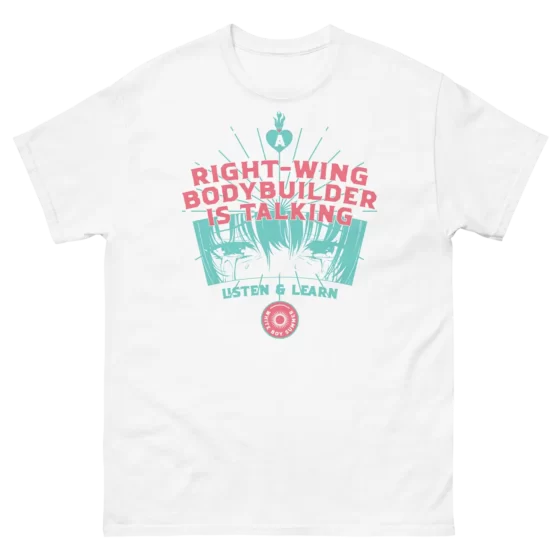Every Blue Pill Is a Black Pill
A film professor once told me that everyone is two credits shy of a film degree. We’re all bilingual, fluent in the visual language of film. Change the timing of an edit by half a second, and audiences the world over will feel the difference. Media literacy, it would seem, is a quasi-birthright of modernity. And yet… I find myself disabused of this notion more and more. To quote the singular Garfieldbot (@robertlasagna1), “To be literate is to be able to read AND write. To be ‘media literate’ you must be able to make movies. What is called ‘media literacy’ is the inability to write.” This illiteracy is marked not by an inability to watch film—it is marked by a startling and complete blindness to film form. Instead, the modern illiterate clings to context above all else, priding themselves on knowing everything around a work of art, unable and unwilling to actually engage with it.
Every so often, like a refilling abscess, social media erupts with the take that The Matrix Resurrections (2021) is a “good” film. Social media is forehead-deep in bad takes, but I feel compelled to lance this infected cyst once and for all. This is for two reasons: Matrix Resurrections is a film completely devoid of any redeeming qualities, which is to say any real form. And through this total failure, it serves to illuminate The Matrix (1999) as the most culturally relevant film of the 21st century.
“How bad?”
“Like, all the bad!”
“Yeah. This is bad.”
Every single creative decision in Resurrections is the wrong one—or, rather, a distinctive lack of one. Every frame is flat and absent any composition. There are alternating shots with wildly different lighting. The sets are boring and the shallow depth of field makes sure you rarely see them. No one interacts with any props in any meaningful way—there seem to be no “objects” in this Matrix. During a massive action scene entire characters disappear only to step back into frame from nowhere a minute later.
There is one shot, conveniently in the trailer should you wish to see it, of Keanu in an elevator surrounded by people whose faces are lit up by smartphones. The composition is so bad, so busy and unclear, that I have to wonder how any gaffer could have lit it, how any cinematographer could have shot it, how any director could have signed off on it. And like the rest of the film, Keanu stands still, doing nothing. An inert NPC.
Keanu. I’ll try to keep this short: Keanu has the brittleness of Liam Neeson in Taken 2 and the acting chops of a post-dementia Bruce Willis, and is aided by the special effects of Chris Evans’s 2009 film Push. In fact, I’ve taken his lines from his scene with Trinity in the coffee shop, clearly meant to be romantic and humanizing and decidedly unMatrix, and will list them here:
-Sure.
-There’s a lot of me in him. Maybe a little too much.
-Please.
-Trinity.
-Kinda.
-God, yeah.
-Ah.
-Really?
-(Long Silence)
-This is the best thing I’ve done in a long time.
-Oh.
-(Expressionless blinking as she leaves).
End Scene.
I feel bad for Keanu. I feel bad for all the actors. There is nothing for them to DO. Fight scenes have no point other than to break up the static pace, and the film is hellbent on editing so we never see a punch land. The gun fights don’t matter and the martial arts are so boring. Zero tension, terrible pace, no stakes at all.
The plot has David Mitchell’s sticky fingers all over it. Gooning to explicit fiction in fiction. It makes no sense, and characters are robotically obsessed with loudly proclaiming their backstories, explaining futuristic technology that is never used, and in callbacks that no one on earth cares about. Wow, they brought back the Indian girl Neo met in Matrix Revolutions. I have no memory of this character, and neither does anyone else. Yet we spend precious MINUTES of runtime shoehorning her into the plot.
Other creative choices run directly contrary to the most basic creative foundations of the original. In The Matrix, body horror is the violence inflicted on the slaves of the future, not scars from whips but cable jacks punched into our bodies, malignant machines burrowing into our flesh, we the crops, I have no mouth and I must scream… When an agent takes someone over it is painful– they morph and twist their flesh into conformity. In Resurrections, this is accomplished with a quick shake of the head. Phew. Glad we didn’t waste the audience’s time with that. On to the good stuff.
This, all of this, is Lana Wachowski’s fault. One of the stupidest excuses made on the film’s behalf is that Lana made the film as a middle finger to Warner Brothers insisting on a sequel. After all, they talk about Warner Brothers in the film!! SoyfacePointing.jpg.
Let me ask you a question: Why do you know the “context” a film was made in? Why do you, someone with no connection to Hollywood at all, see articles about how the film “helped Lana deal with the death of her mother” before it’s released? Here is a simple rule you can follow: If you are being made aware of the context of a film it is because the film is bad. What was going on in the Coen Brothers’ lives when they made No Country for Old Men? What was going on in Fincher’s life when he was making The Social Network? Or how about what was going on in the Wachowski Brothers’ lives when they were making The Matrix? You don’t know, and you don’t know because those are good films. When you direct a film you get more credit than you’re due if its a success, and more blame than you deserve if it fails. Same as a general in wartime. That’s why it used to attract high conflict, glory seeking, technology minded men. Glory can be yours, but if you should fail… well, context will be needed. So morons the “media literate” can repeat it, ad nauseam, ad nauseam.
Why do my eyes hurt?
You’ve never used them before.
Why bother with this? Res Ipsa Loquitur. Aren’t there enough takedowns? Isn’t it unseemly to flog the dead horse even if deserved? Through the act of writing the above on Resurrections I have arrived, unerringly, at this conclusion: If Resurrections has no film form to speak of, then it is the form of The Matrix that makes it the most culturally relevant film of the twenty-first century.
Sure, it’s an extremely tight film that somehow manages to make mass shooters the good guys- a pretty radical achievement in its own right. It is a synthesis of many ideas of the 90s: hacking, outsiders vs. corporations (interesting that so much action and destruction takes place in office buildings…), goth subculture, anime aesthetic, not to mention that it is completely infused with trans issues which would dominate culture over the next twenty five years. At a glance I would mention the importance of chosen “hacker” names, body horror, inverse of male/female story roles, and outsiders of many hues banding together intersectionally against the all powerful, godlike system that makes up reality.
These are the usual analytical reasons, the kind someone who is ‘media literate’ would point to. I encourage you to throw them out. What makes a film work and what makes it endure is its use of the film form. For The Matrix, the magic lives in its explicitness of form.
I don’t suppose you can still fly?
Yeah. That’s not happening.
That same film professor once told us that Asian audiences will suspend their disbelief a step further than Eestern audiences. I think we all know this feeling: You’re finally watching that classic anime where the teenage boy pilots a mecha to fight the big monster and you think to yourself “Bravo. Classic, indeed”. Then the mecha grows a mouth and starts eating meat, and you squint and think “But is this necessary?”
The Matrix included a lot from eastern cinema that audiences were not familiar with in 1999, specifically “wire-fu” martial arts, and body horror. How it gets audiences to accept these things is to explicitly explain them in the plot. The consequence was, Western audiences enjoyed something they had never seen before. But this explicitness goes much, much further.
Neo, in his journey to become the One, is visually shown to gain control over the Matrix as his belief increases through Bullet Time. Bullet Time breaks the barrier of time and space- the camera could always stretch it, but breaking it is an excellent filmic representation of breaking out of reality. Notice that the first time we are introduced to it, Trinity is FROZEN in midair. Later when Neo is able to dodge during it, we know he is special. In the end he is able to start and stop it—to synthesize Bullet Time with reality. This explicit use of film form leaves no doubt for the audience: he is the One.
That alone is enough to make a film entertaining. A good film always uses the form of film to tell its story. Always. Any film that breaks this rule feels hollow. Films directed by playwrights are great examples of this: They can crank out dialogue and drama but are completely ignorant of film grammar. Even this though, is not enough for a film to resonate 25 years later. Special effects, even basic conventions of filmmaking, are antiquated by the passage of time. So what is it about The Matrix that endures?
You don’t know what it is, but it’s there. Like a splinter in your mind, driving you mad.
The great secret, the one that we continue to drift further and further from, is that a film endures because it connects to our real lives through form. And the way The Matrix does this is through the form of its drama. In a screenplay, the secret to motivated characters is choice. “Backstory” is modern bullshit. What makes a character is the audience witnessing the choices they actively make, large and small. Film allows us to be the perfect voyeur: Let us watch your characters DO things! Like its use of film form, the drama of The Matrix is consistently explicit. This explicitness serves two functions.
One of the most inhospitable facets of “the current culture” is how it has trained people to have to be told what something is for them to enjoy it. An easy example is a semi-viral review of the 2022 film Tár where the writer was confused when she tried to look up the protagonist on Wikipedia and found out they aren’t a real person. She didn’t understand “the point” of the film if Lydia Tár was “made up”. If she wasn’t real, and the social message was not obvious, then why make the film? And she’s not alone, my friend who reads 2,500 word essays, she is the norm. In light of this, nearly all media is prepackaged to avoid this fate—it tells the audience precisely how to feel about it.
The explicitness of drama in The Matrix was a major step forward in this evolution. It’s one reason the film holds up so well. Audiences were on their way to expecting the explicit from cinema, and the Wachowski Bros made a film forehead deep in it. Films like Everything
Everywhere All at Once marks the next evolution: Characters don’t even have internal conflict over their choices—they traipse the multiverse battling externalized, explicit, versions of themselves who have already chosen differently. Being able to see the effects of all choices before you have to make a choice… now there is a modern fantasy. Maybe it deserves those Oscars (and our scorn).
The explicit form of drama in The Matrix allows modern audiences to understand, to enjoy, what they are seeing. But the rabbit hole goes deeper. Enjoyment is one thing, but to be art, true art, then the form must connect to our real lives. And the reality of The Matrix is foundationally reflective of our own.
You take the blue pill, you wake up in your bed and believe whatever you want to believe.
You take the red pill, and I show you how deep the rabbit hole goes.
Neo is presented with choices throughout the film. This cannot be overstated enough. Neo is TOLD he is being GIVEN a choice, and the question hanging over the audience is “Which choice is he going to make?” This is fine: drama uses explicit choice all the time. But what makes The Matrix unique is that every single choice is explicit. Even when Neo makes a choice that shouldn’t be nakedly explicit, it is made to be. At long last, he turns from the subway stairs to instead face Agent Smith. Trinity: What’s he doing? Morpheus: He’s beginning to believe.
There it is.
The most explicit of them all is the most enduring: red pill or blue pill? Take a second and look at what is being offered here. Morpheus is making a claim: there is something wrong with reality (and I know what it is). Either take the blue pill and “believe what you want” or take the red pill and “I’ll show you (my) truth”. What’s genius about this scene is that Neo is being offered a false choice. To take the red pill is to wholesale accept Morpheus’s proposition and solution. To take the blue pill is to accept that Morpheus’s claims about reality are true and do nothing. In effect, every blue pill is a black pill. Heads I win, tails you lose. The actual other choice would be to take no pill at all. Sometimes the only way to win is not to play.
This form of drama aligns exactly with how social media functions. You are offered up a piece of content (viral post, video, or news story) that is quickly sorted into a binary, a choice designed to get you to engage. Do you argue in support of this, or argue against it? Either way you argue is meaningless because to engage at all means to accept the frame the content creates. To take either offered pill is to accept the offerer’s reality even as you nominally disagree with them. Let’s turn to the one group that gets me to engage every time: Just Stop Oil “activists” and their attacks on art.
Like a modern Morpheus, their actions create exactly this dynamic. First they deface a work of art, then post the footage online with a poorly worded statement decrying climate change. A binary choice is offered to you. One side says it’s justified because climate change will mean no more art anyway! The other says it’s not justified and these people must be stopped. But therein lies the trap. By arguing about climate change AT ALL you are accepting the frame of their argument. And the frame they’ve created, the reality you are accepting by engaging, is that all art is expressly political. The belief that art should not be defaced is now a part of a binary, an offered pill. Even arguing vehemently against it opens the door to its destruction. When they deface art they are both figuratively and literally destroying form, ensuring that “context” reigns supreme. This is the living manifesto of illiterates. And so we drift further into their reality, fruitlessly picking apart their absurd logic, dry swallowing the offered blue pill.
I didn’t come here to tell you how this is going to end. I came here to tell you how it’s going to begin… I’m going to show them a world without you, a world without rules and controls, without borders or boundaries, a world where anything is possible. Where we go from there is a choice I
leave to you.
Resurrections is a film absent any form. The Matrix is a film rich in it. The form of the film makes it entertaining, and the form of the drama has power as we encounter it in our everyday lives. If this is true, if we are living the form of drama in The Matrix, it’s worth asking, what does its resolution look like to those who reside in it?
Take a moment and reflect on the ending of The Matrix. Isn’t it a little strange? One would think the end of the film would involve Neo escaping from the Matrix for good, leading others into a new, grounded reality. A new enlightenment. This might be implied, but it isn’t at all what’s on screen. Instead, Neo remains in the Matrix, the oppressive enslaving system, except now he is all powerful. And he offers the Matrix a “choice” of his own. In The Matrix, this is what victory looks like: within the grand system you claim oppresses you, all powerful and unbound by rules. Reshaping reality by force. The offerer of false choices.
































